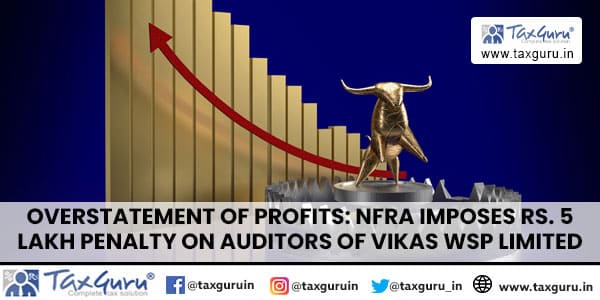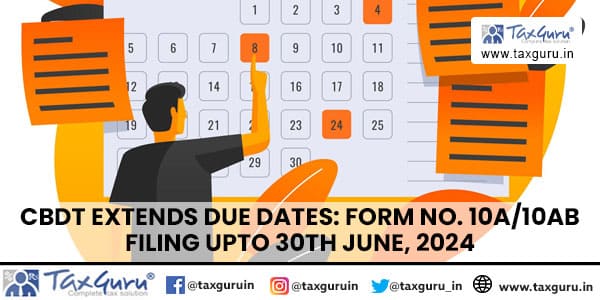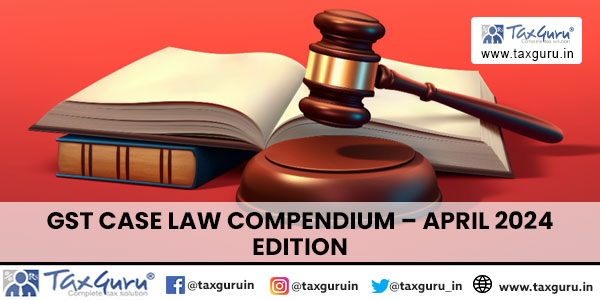CA Pratik Anand

With the advent of Companies Act, 2013, the compliances of Companies have increased especially in case of Private Companies.
Many people who have incorporated companies but are not doing any business are thinking of closing down the companies because of the increased compliance and resultant costs involved.
We shall be discussing the procedure to close down a company and the procedure for applying for the status of a dormant company in this article from a practical point of view.
The procedure to close down is dealt with by section 560 of the Companies Act’1956. The sections which deal with the closure of companies under the Companies Act’2013 have not yet been notified therefore the procedure to be followed is that given in section 560 of Companies Act’1956.
The procedure notified is laid down in General Circular 36/2011 dt. 07.06.2011. This is called Fast Track Exit Scheme/Mode.
Under the fast track exit scheme the Companies can apply for closure.
Ques: Who can apply for closure?
Ans: As per section 560 of the Companies Act’1956, Any defunct company desirous to strike off its name from the register of Registrar of company can apply in Form FTE for strike off its name from the register maintained by ROC as per Guidelines for ‘FAST TRACK EXIT MODE’ issued vide General Circular No. 36/2011 dated 07.06.2011.
Ques: What is a defunct Company?
Ans: For the purpose of applying for the FTE scheme, a defunct company means a company which has:
- Nil asset and nil liability, and
- Not commenced any business or activity since incorporation or
- Not been carrying any business operation since last one year before making an application under Fast Track Exit Scheme.
Procedure for application for closure of Company
1) Apply for approval of Board for applying for closure
The Company has to pass a board resolution for applying for the FTE. The Company should authorise one of the directors to sign any documents or execute any deeds/affidavits in r/o the same.
Before passing the resolution, the company has to ensure that it fulfils the criteria of a defunct company as above.
Note: All bank accounts, Registrations with the govt. authorities have to be closed/ cancelled before application for closure of Company.
2) Once board resolution is passed, the directors of the company have to make/ give an affidavit individually stating therein the following:
- The directors swear that they are the directors of the company applying for closure.
- They state that the company has closed all the bank accounts in its name.
- The affidavit also states that the company has nil assets/liability.
- The affidavit also declares that the company has not been carrying on any business for the past one year atleast or it did not carry on any business since incorporation.
- Reasons for not carrying on any business are also to be given.
- It also stated that the company has no statutory dues as on the date of declaration and that there are no litigations pending before any court of law against or involving the company.
- The affidavit can be made on a stamp paper of Rs. 100/- duly notarised by the notary public.
3) After the affidavit is made, the directors of the company have to execute an Indemnity Bond. The indemnity bond can be executed either individually by every director or collectively by all directors.
The directors undertake:
- To indemnify any person for any losses that may arise pursuant to striking off the name of the company.
- To pay and settle all lawful claims arising in future after the striking off the name of the company
- To settle all lawful claims and liabilities which have not come to our notice up to this stage, even after the name of the Company has been struck off in terms of section 560 of the Companies Act, 1956
Notes:
- The details of the affidavit are to be given in the indemnity bond, therefore this bond should be made after execution of the affidavit.
- The reasons for not doing any business are to be given.
- The indemnity bond has to be witnessed by two persons.
- The indemnity bond can be executed on a stamp paper of Rs. 200/-.
4) After all the above documents are ready, the company has to apply in Form FTE available on the MCA Website for closure of the company to the jurisdictional ROC.
- The documents stated above are to be attached to the form.
- The form is digitally signed by the authorised director and filed on the MCA Portal. The application fee will be Rs, 5000/-.
5) On application, the ROC will flash the name of the company on its website for a period of 30 days, to give notice to anyone who may have objection to the striking off the name of the company.
6) On lapse of the period of 30 days, the Registrar will issue a certificate that the company is closed and that its name is struck off from the register of companies maintained with the ROC.
Ques: Can a defaulting company apply for FTE?
Ans: A defaulting Company is a company which does not file the annual returns and/or annual financials for any financial year(s).Such a company can apply for FTE provided it fulfils other conditions.
Dormant Company
Another new concept that has come into existence since the new Companies Act’2013 was enacted is the concept of Dormant Company.
Section 455 of the Companies Act’2013
(1) Where a company is formed and registered under this Act for a future project or to hold an asset or intellectual property and has no significant accounting transaction, such a company or an inactive company may make an application to the Registrar in such manner as may be prescribed for obtaining the status of a dormant company.
- The first part of the definition covers the companies registered and formed under the Companies Act’2013 which have no significant accounting transactions but hold assets or are incorporated for a future project in which there are no transactions presently, such Companies can apply for dormant status.
- The second part of the definition deals with Inactive Companies which is more relevant for companies incorporated before the enactment of the Companies Act’2013 i.e companies incorporated under the Companies Act’1956.
- “inactive company” means a company which has not been carrying on any business or operation, or has not made any significant accounting transaction during the last two financial years, or has not filed financial statements and annual returns during the last two financial years;
- “significant accounting transaction” means any transaction other than—
- payment of fees by a company to the Registrar;
- payments made by it to fulfil the requirements of this Act or any other law;
- allotment of shares to fulfil the requirements of this Act; and
- payments for maintenance of its office and records.
Let us dwell more on the concept of ‘Inactive Companies’.
‘Inactive Company’ means which is inactive i.e it has not been carrying on any business or the company has not made any significant transactions during the last two years or it has not filed annual returns for the last two financial years.
- Therefore, the companies which are not carrying on business for the past few years can apply for ‘dormant status’. Also, a defaulting Company which has not filed annual returns and financial statements for two years or more can also apply for such status.
- The dormant status is especially beneficial for companies which have no significant transactions presently and are not carrying on any business but they cannot be closed down due to holding of assets in the companies such as land, building etc. Ex: Construction companies, Real Estate Companies etc.
- Dormant status is also beneficial for companies which are incorporated for undertaking a future project which will take place after sometime. These Companies can reduce compliance and costs by applying for dormant status till the time they become fully operational.
Ques: What is the advantage of applying for ‘Dormant Status’?
Ans: There is lesser compliance burden for a dormant company which reduces the costs of maintaining such a company.
Ques: What are some of the exemptions provided to a dormant company?
Ans: ‘Dormant Companies’ are exempted from the following:
- To include cash flow statements in their financial statements.
- From holding board meeting in each quarter. Dormant companies are required to hold board meeting in each half of the calender year with a gap of atleast 90 days. Therefore, dormant companies are required to hold only two board meetings mandatorily during the year.
- The provisions of the Act in relation to the rotation of auditors shall not apply to dormant companies.
Ques: What is the process for applying for dormant status?
Ans: Process for obtaining status of dormant company is:
- Call a Board Meeting for fixing date, time of EGM.
- Issue Notice of General Meeting
- Engage an Auditor/ Chartered Accountant to issue certificate.
- Hold Extra Ordinary General Meeting
- Pass Special Resolution.
- Authorize director to make application for Dormant with ROC.
- File E-form MGT-14 with ROC for filing special resolution.
- After filling of form MGT-14, File FormMCS-1 with the registrar.
Attachments with Form MGT-14:
- Copy of Special Resolution.
- Notice of EGM along with Explanatory Statement.
Attachments with form MSC-1:
- Copy of Board Resolution.
- Copy of Special Resolution.
- Auditor’s Certificate.
- Statement of Affairs duly certified by Chartered Accountant or Auditor(s) of the company.
- Latest Financial Statement and Annual Return of the Company is mandatory as an attachmentin Case the Same are filed with Registrar.
- Certificate regarding no dispute in the management or ownership
- Consent of lender,if any loan is outstanding.
Processing Type
The eForm will be auto approved (STP).
Certificate
A system generated Certificate of status of a Dormant Company is issued by Registrar and sent to the user as an attachment to the email, after approval is granted. Once the form is approved the status of the company shall be changed to ‘Dormant under section 455’.
Conditions for applying for Dormant Status
- No inspection, inquiry, or investigation has been ordered or taken up against the company or no prosecution has been initiated against the company and pending under any court.
- The company does not have any public deposits or interest thereon outstanding for payment.
- There is no outstanding loan, secured or unsecured. If there are unsecured loans then consent of the lender should be obtained and enclosed along with the form.
- There should be no dispute or difference amongst the management or promoters of the company and a certificate to that effect is enclosed.
- The company does not have any outstanding tax dues either to central or state government or local authorities.
- The company has not defaulted in payment of its workmen’s dues;
- It is not a listed company.
Compliances by a dormant company:
- Minimum number of directors for dormant company: A dormant company shall have a minimum number of three directors in case of a public company, two directors in case of a private company and one director in case of a One Person Company.
- Return of dormant companies: A dormant company shall file a “Return of Dormant Company” annually, interalia, indicating financial position duly audited by a chartered accountant in practice in Form MSC-3 along with such annual fee as provided in the Companies (Registration Offices and Fees) Rules, 2014 within a period of thirty days from the end of each financial year. Provided that the company shall continue to file the return or returns of allotment and change in directors in the manner and within the time specified in the Act, whenever the company allots any security to any person or there is any change in the directors of the company.
Notes:
- The Registrar on its own motion can also change the status of a company to dormant if it has not filed financial statements or annual returns for two financial years consecutively. The Registrar will do so only after giving the Company a reasonable opportunity of being heard.
- Proviso to Rule 8 of the Companies (Miscellaneous) Rules, 2014 says that a dormant company cannot remain as a dormant company for more than 5 consecutive financial years. If it remains so, then the Registrar shall commence the process of striking off the name of the company from the Records, i.e. the company will be removed. So maximum tenure for a dormant company is 5 consecutive financial years.
Conclusion:
Therefore, to conclude we can say that the companies which are not carrying on any business and have no significant transactions can either apply for closure or for dormant status depending upon the long term plans of the company.
Hope you find the above information relevant and useful in your daily practice
(The author is a CA in practice at Delhi and can be contacted at: E-mail: capratikanand@gmail.com, Mobile: +91-9953199493)





















Company become defunct during pendency of proceedings can it still pursue the proceedings under the arbitration act?
Sir, We incorporated a company in Jan 2012(in companies act 1956). Till then We have not executed any transaction or did any business on behalf of company. Pan Card has not been obtained. Bank account is also not obtained. paid up capital is Rs. 1 Lakh. we would like to obtain “dormant status” for the company. Is it possible now in Oct 2016. what will happen to not filed Annual returns. What about not filed IT returns.
Is FTE applicable for LLP which has not filed returns in the previous years? This year we have filed the returns. Can you tell whether there will be penalty charges still to be paid for the years in which the tax return was not filed?
Can a LLP apply for FTE? We had not filed returns for previous years.
hi Nivrutti,
Did you figure out the way to repatriate the funds? We have obtained approval from RBI but I’m facing practical difficulty in ascertaining the tax implications from remitting the funds overseas. The only two viable options are dividend and buy back. But since this is a defunct company, things don’t look so simple. Any advise will be most welcome
I have submitted all docs as above in Mar 16 – when will i receive an intimation that the co. is closed?
on mca site it is showing as ‘in process’ – what is the ball park time for closure of co.s ? since such intimation has not been recd by 31/3 does the co have to file a income tax return?
If a company has not filed any ROC Returns or any returns since incorporation. Is it necessary to finish it all with all the Fines till date to file for FTE ???
if the company is not filing annual returns form the date of incorporation.in that case can company is required to file the annual returns before filing the form under fast track exit mode
May I know how to transfer the balance fund to foreign holding company under RBI and Companies act? then it will be possible to closed the bank account and apply under FTE scheme…
Thanks for the writing.